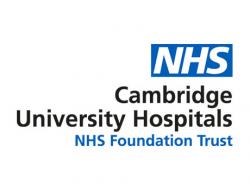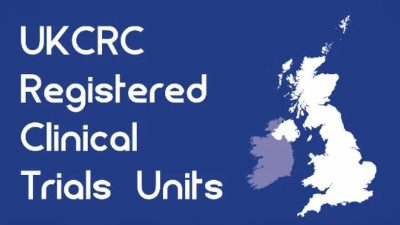
- Neuroscience
- Trials closed
RilmHD
A single centre safety study of Rilmenidine for the treatment of Huntington’s Disease
Research summary
Huntington’s Disease is an autosomal-dominant cytosine-adenine-guanine (CAG) trinucleotide repeat-induced neurodegenerative disorder. The disease includes cognitive, psychiatric and motor dysfunctions. There are no known treatments to slow the consequent neuro-degeneration in humans. Death follows about 20 years after onset. Current treatment is limited to symptomatic and palliative care.
Normal huntingtin is increasingly seen to be important in many vital processes ranging from embryonic development to neuronal viability. An N-terminal aberrant expansion of the huntingtin protein encoded by the CAG trinucleotide repeat is the hallmark of the mutant huntingtin and appears to cause neuro-degeneration in several possible ways.
The mutant protein confers a toxic gain-of-function onto the protein and therefore acts like a toxin in neurons. One rational way to treat the disease may be to enhance the degradation of the toxin and limit its expression levels. The Rubinsztein lab have shown that one can speed up the degradation of mutant huntingtin and decrease its levels and toxicity by upregulating a process called autophagy.
Macroautophagy involves the breakdown of cellular constituents including organelles and proteins. This occurs via the formation of a double membrane structure called an autophagosome encircling cytosolic contents such as organelles and subsequently fusing with lysosomes to form an autophagosome and so catabolise the constituents using the acidic environment and the lysosomal hydrolases. This process is commonly referred to simply as autophagy.
Autophagy is an evolutionary conserved mechanism (with many homologues between yeast and mammals) to degrade bulk cystosolic constituents including organelles and proteins by the formation of a double membrane engulfing the target known as an autophagosome before fusing with a lysosome (autophagolysosome) in order to provide the necessary acidic pH and hydrolases to commence breakdown.
There is no therapeutic treatment for Huntington’s disease. Current approaches are limited to symptomatic treatment and palliation. Data from non-clinical studies outlined in previous sections give clear indication of the promise of an autophagy upregulating agent reducing and, hopefully, reversing the accumulation of mutant huntingtin that is the pathological hallmark of the disease. In vivo study in mice confirms this. Rilmenidine has been found to upregulate autophagy via a pathway present in primary neurons.
Given the known plethora of side effects of Rapamycin, the prototypical agent to upregulate autophagy, and the well studied safe and highly tolerable profile of Rilmenidine (prescribed for patients with hypertension), it is a logical choice for a first, safety study of such an agent in patients with HD. The secondary objective is to ascertain if there is a suggestion of Rilmenidine’s efficacy in patients with HD. The ground will then be set for larger, multi-centre, randomised controlled trials to show, hopefully, incontrovertible evidence that HD can be treated by upregulation of autophagy.
This study is an open-label, single-centre safety trial of sixteen patients to assess, over a period of two years, the tolerability of the chosen agent (Rilmenidine) in the target population of patients with HD. The primary aim is to assess and confirm the safety and tolerability of Rilmenidine, taken orally at an initial daily dose of 1mg for 6 months, followed by an increased daily dose of 2mg for the remaining 18 months of treatment, including ascertaining any adverse effects in the target population of patients suffering from Huntington’s Disease. Periodic assessments of the patients’ physical and mental health will be done to establish the primary objective.
Main inclusion criteria
- A confirmed diagnosis of Huntington’s Disease on the basis of qualifying clinical signs and symptoms as well as a relevant family history, or a CAG repeat of >36 on exon 1 of the htt gene.
- HD stage 1-3 with a total functioning capacity (TFC) on the Unified Huntington’s Disease Rating Scale 1999 (UHDRS)15 of at least 5.
- Ambulant and able to self-care independently.
- Age: between 18 and 70.
- Women of childbearing age who are neither pregnant nor planning to conceive during the period of the study. Women will be required to use two forms of contraception, at least one of which to be a barrier method.
- English speaking and able to give written, informed consent.
Main exclusion criteria
- An ongoing clinically significant and unstable General Medical Condition (including but not limited to; asthma, chronic obstructive pulmonary disease COPD, unstable ischaemic heart disease IHD, congestive cardiac failure CCF, left bundle branch block LBBB or a cerebral vascular accident CVA) confirmed via past medical history or baseline medical physical examination and investigations.
- Prescribed anti-hypertensive medication or any drug known to be contraindicated or to have an adverse interaction with Rilmenidine (viz. a Monoamine Oxidase Inhibitor).
- Known hypersensitivity to Rilmenidine.
- Ongoing significant mental illness determined by evidence or a history of a psychotic or affective (depression or mania) episode in the six months prior to Baseline Interview assessed using the Diagnostic and Statistical Manual of Mental Disorders criteria (Fourth Edition with Text Revision; American Psychiatric Association).
- Prescribed typical or atypical anti-psychotic medication (only if being prescribed explicitly for treatment of a psychotic illness).
- Pregnant or breastfeeding female patients, including those planning to conceive during the period of the trial.
- Substance (alcohol or illegal/prescription drug) misuse in the six months prior to the baseline assessment.
- Known co-morbid major neurological disorder (incl. Parkinson’s Disease or dementia), HIV/AIDS or Hepatitis (HBV or HCV).
- Previous neurosurgery to the brain.
- Marked clinically adverse abnormalities on laboratory investigations including creatinine clearance <15mg/min or creatinine serum level >177 Umol/l.
Funders and sponsors
Chief investigator
Prof Roger Barker
Contact details
Clinical Trials Manager: Dr Paula Kareclas
Telephone: 01223 596473 | Email: [email protected]






